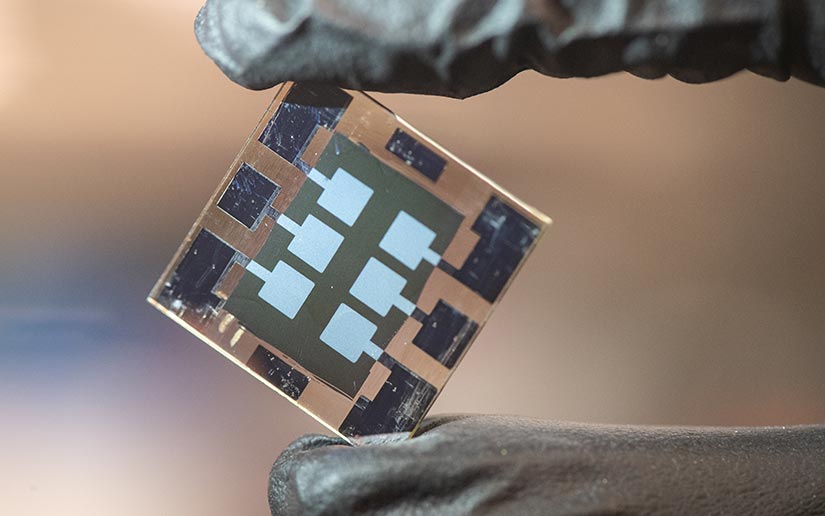Department of Energy Funding Boosts US-MAP Research into Perovskites

The U.S. Department of Energy has awarded $40 million to fund continuing research into perovskites, with much of the money going to facilities connected to a consortium led by the National Renewable Energy Laboratory (NREL).
The collaborative effort established at NREL two years ago called the U.S. Manufacturing of Advanced Perovskites Consortium (US-MAP) is a public-private effort involving laboratories, universities, and private industry. The consortium brings together leaders in perovskite research, development, and manufacturing, to reduce costs and minimize risks for potential investors.
The DOE funds support research and development efforts to advance perovskite photovoltaic (PV) devices, manufacturing, and performance validation. Perovskite, which refers to a crystal structure rather than to a single material such as silicon, has shown potential for being highly efficient at converting sunlight to electricity and for being lower cost to make compared to other PV materials.
“This investment by DOE represents a significant step in establishing a path for metal halide perovskite PV commercialization,” said Laura Schelhas, executive director of US-MAP. “We hope our US-MAP partners will continue their collaborative relationships through these awards and will continue to lead innovation in the performance and manufacturing of these materials.”
Through the Solar Energy Technologies Office (SETO), DOE is investing in two major areas: advancing the efficiency and stability of perovskite solar technology, and addressing challenges in manufacturing perovskite PV modules.
In the first category, SETO awarded:
- $2.15 million to the University of Colorado, Boulder, for two projects—one to find high-performance perovskite alloys, and the other to potentially introduce ways to test the stability of perovskite solar cells and help forecast their long-term stability in the field
- $1.5 million to SLAC National Accelerator Laboratory to develop advanced characterization tools to determine what governs device stability and manufacturing reliability
- $1.25 million to the University of North Carolina at Chapel Hill to develop efficient and stable perovskite cells using formamidinium and cesium
- $1.2 million to NREL for the development of electro-optical imaging methods to measure the film and crystal characteristics in the PV devices
- $500,000 to Swift Solar for the study of module-level components to ensure their long-term operational stability.
NREL also will collaborate with Brown University and Georgia Institute of Technology on separate projects. Brown will receive $1.5 million for research into creating stronger bonds within the solar cell. SETO granted Georgia Tech $800,000 for work into developing charge transport layers structurally designed to conduct electricity, inhibit crystallization, and prevent moisture degradation in cells.
In the manufacturing area, SETO awarded:
- $2.5 million to First Solar to develop a cost-competitive, high-throughput process to manufacture perovskite PV modules
- $2.5 million to Hunt Perovskite Technologies to demonstrate highly efficient lead-safe perovskite PV modules made by slot-die coating
- $2 million to Tandem PV to design and manufacture 1-meter by 2-meter tandem modules.
SETO also awarded $9 million to Sandia National Laboratories and $5 million to NREL to collaborate on moving perovskite solar cells toward commercialization. Sandia will lead the integrated Validation and Bankability Center.
“Other PV technologies, such as CIGS, have shown significant potential but ultimately failed to achieve commercial success,” said Michael Irwin, chief technology officer of Hunt Perovskite Technologies LLC (HPT). “Through NREL’s leadership in the DOE SETO perovskite Validation and Bankability Center, we can leverage those lessons learned to ensure this extraordinary semiconductor in metal halide perovskite can realize its potential in solar PV applications. HPT has partnered with NREL since 2014, and we look forward to continuing the relationship through US-MAP.”
For more information about US-MAP, visit www.usa-perovskites.org.
Last Updated May 28, 2025
